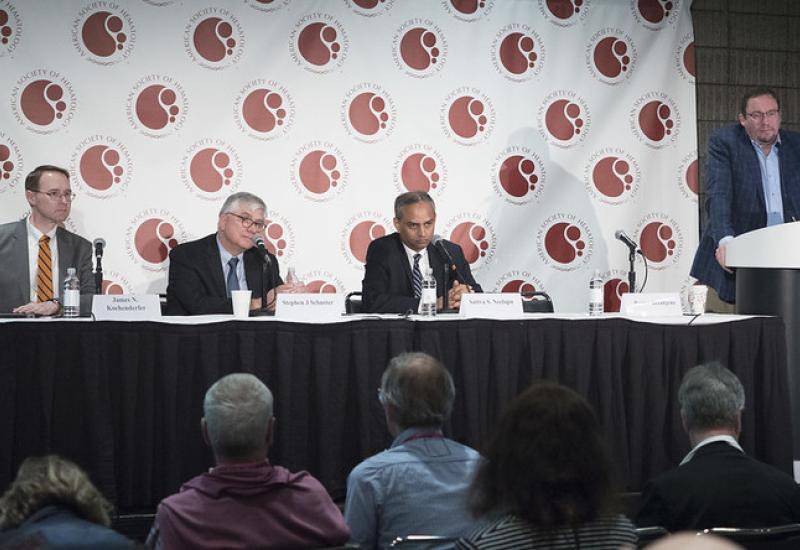ESMO 2025 – synthetic lethality leaves much to prove
Artios, Synnovation and Novartis show mere glimmers of activity.
Artios, Synnovation and Novartis show mere glimmers of activity.
Novel mechanisms involving synthetic lethality received an airing at ESMO on Friday, with phase 1 results for Artios’s ART6043 – the first ever human data for a DNA Pol theta inhibitor – squaring off against first-in-human data covering Synnovation’s PARP1 inhibitor SNV1521.
In the event, results showed only hints of activity, and in both cases only in patients who hadn’t already received a PARP inhibitor; this curiosity could raise doubts about the projects' development paths, given that a likely initial use would be in heavily pretreated patients. And there was no respite for another synthetic lethality approach, Novartis’s Werner helicase inhibitor HRO761.
Already, the ESMO abstract for HRO761 had revealed why Novartis had said nothing about the molecule since putting it into phase 1 two years ago. Full data at ESMO showed a deterioration even of those numbers, with response rates of just 6% in colorectal cancer, and 5% in non-colorectal MSI-high/dMMR patients. This was despite ctDNA analyses suggesting “deep molecule responses in colorectal cancer”.
Such a disparity called out for more work on biomarkers to refine the patient population, according to the ESMO session’s discussant, Dr Antonio Marra of Memorial Sloan Kettering, assuming that Novartis elects to continue development. Earlier Roche dumped the Vividion (Bayer) Werner helicase project RO7589831, and the next data in this field should come next year from Ideaya/GSK’s GSK4418959.
PARP1 & Pol theta
As for PARP1 inhibition, AstraZeneca is out in front here with saruparib, which is now in two phase 3 trials in prostate cancer (in addition to one in breast cancer), fuelled by data from the phase 1/2 Petranha study, which showed ORRs of 25% and 73% in AR inhibitor pretreated and naive patients respectively, when dosed in combination with AR inhibition.
The key feature for such molecules should be an improved safety profile versus standard PARP inhibitors, given that the latter also hit PARP2, which is said to result in haematological toxicity. Synnovation’s SNV1521 did at least show this, yielding grade 3+ treatment-related adverse events in just two of 58 patients treated, said Dr Patricia LoRusso of Yale Cancer Center.
But there were just three confirmed partial partial responses (in breast and prostate cancers) among 27 evaluable subjects treated with SNV1512. There were all in PARP inhibitor-naive tumours; the situation was complicated by the fact that at least three other PARP-naive patients experienced significant disease progression.
Selected first-in-human data
| Project | Mechanism | Company | ESMO data |
|---|---|---|---|
| SNV1521 | PARP1 inhibitor | Synnovation Therapeutics | 11% cORR in 27 patients, all responses in PARPi naive |
| ART6043 | DNA polymerase θ inhibitor | Artios | 2% confirmed ORR (plus 1 uCR) in 42 HRRm cancers as Lynparza combo; no activity as monotherapy in 19 patients |
| HRO761 | WRN inhibitor | Novartis | cORR 6% in 33 MSI-H/dMMR colorectal cancer patients; cORR 6% in all 55 MSI-H/dMMR solid tumour patients |
Source: ESMO.
Meanwhile, DNA Pol theta (polymerase θ) inhibition has enjoyed some popularity, with GSK/Ideaya’s GSK4524101, Moma’s MOMA-313, Varsity’s Novobiocin, Repare’s RP-3467, Danatlas’s DAT-1604 and SynRx’s SYN818 featuring among those that have entered the clinic.
The first ever human data, however, have come from Artios’s ART6043, which has now been given to 19 patients as monotherapy, and to 42 in combination with Lynparza, said MD Anderson’s Dr Timothy Yap. However, the only activity has been seen in combination with Lynparza.
This amounted to one confirmed partial and one unconfirmed complete response, across the 42 patients; there was also a PSA response in one prostate cancer subject. However, the only confirmed PR, in ovarian cancer, was in a PARP inhibitor-naive patient, so the possibility of this being due to the Lynparza part of the combo can’t be ruled out.
Artios earlier shelved another DNA Pol theta inhibitor, ART4215. The discussant, Marra, said more work was necessary to determine whether the combo might work in PARP inhibitor-resistant tumours.
2981













